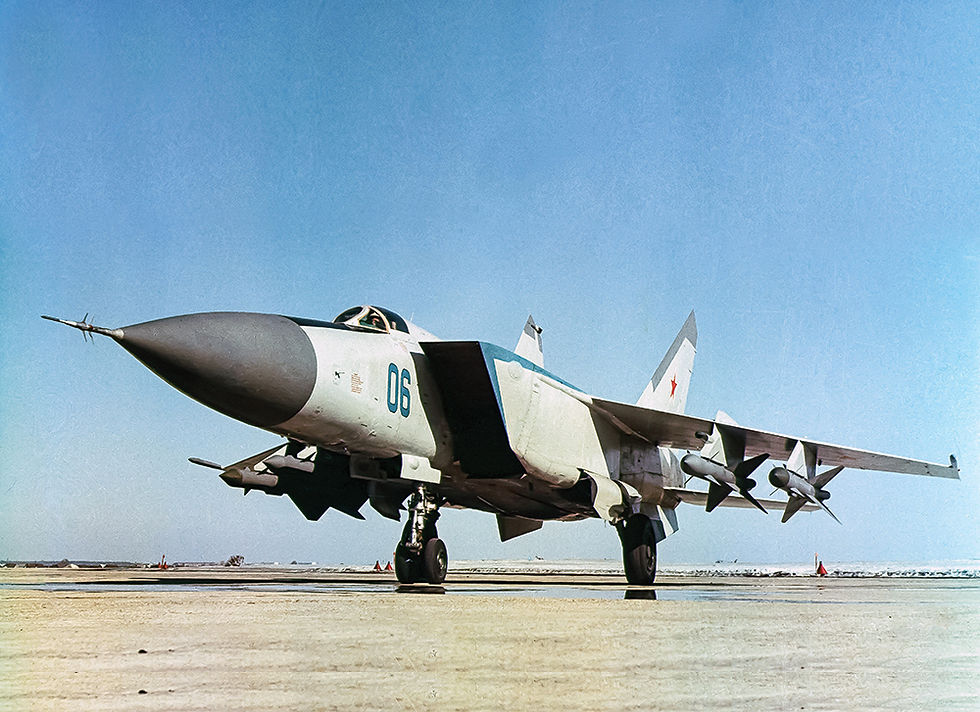The Night the Nighthawk Fell: The F-117 Shootdown in Yugoslavia
- thiliwriting
- Mar 25, 2024
- 3 min read
The F-117 Nighthawk, a creature of the night shrouded in secrecy, was the embodiment of American airpower's technological edge. Its faceted design, a marvel of early stealth technology, made it a phantom on radar, capable of penetrating the most heavily defended airspace. But on a cold March night in 1999, over the skies of Yugoslavia, the unthinkable happened – an F-117 was brought down.
This incident, forever etched in aviation history, shattered the myth of the Nighthawk's invincibility and became a turning point in the understanding of stealth technology. It's a story not just of technological limitations, but of human ingenuity, the fog of war, and the ever-evolving cat-and-mouse game between offense and defense.
The Invisible Warrior:
Developed in the 1970s under the cloak of utmost secrecy, the F-117 was a revolutionary aircraft. Its design, resembling a collection of jagged planes rather than a sleek fighter jet, was dictated by its primary function – deflecting radar waves. This "low observable" or "stealth" technology made the Nighthawk appear significantly smaller on radar, allowing it to slip past enemy air defenses and deliver precision strikes with laser-guided bombs.
For nearly two decades, the F-117 thrived in this cloak of invisibility. It played a crucial role in conflicts like Panama and the First Gulf War, operating with near impunity. The aura of invincibility surrounding the Nighthawk fueled public perception and instilled fear in potential adversaries.
The Stage is Set:
In 1999, tensions flared in Yugoslavia, culminating in a NATO bombing campaign aimed at halting Serbian aggression in Kosovo. The F-117, with its unmatched ability to strike strategic targets at night, was a key player in this operation.
However, the Yugoslav air defense network, though outdated, was not entirely toothless. The Serbs possessed a vast arsenal of Soviet-era surface-to-air missiles (SAMs), including the S-125 Neva, a low-to-medium altitude missile system.
The Night of the Upset:
On March 27th, 1999, Captain Dale Zelko, a seasoned F-117 pilot, found himself skimming the darkness over Yugoslavia on a routine bombing mission. Unbeknownst to him, a determined crew of the Yugoslav 3rd Battalion of the 250th Air Defense Missile Brigade, led by Colonel Zoltán Dani, was diligently tracking NATO aircraft.
What transpired next remains a subject of debate. Some believe the Serbs employed unconventional tactics, like switching off their radar intermittently, to lure the F-117 into a false sense of security before locking on with a surprise launch. Others suggest a technical malfunction on the Nighthawk might have compromised its stealth momentarily.
The result, however, was undeniable. A single S-125 Neva missile streaked towards Captain Zelko's aircraft. Despite evasive maneuvers, the missile found its mark, crippling the F-117.
A Dramatic Ejection and a Frantic Search:
With his plane ablaze, Captain Zelko initiated an emergency ejection. He parachuted safely to the ground, a testament to the F-117's robust safety features. However, he landed deep in Serbian territory, sparking a tense rescue operation.
U.S. special forces, known as Pararescuemen (PJs), embarked on a daring night mission to extract Captain Zelko. Flying under the cover of darkness and evading hostile fire, the PJs successfully retrieved the pilot, showcasing another facet of American military prowess.
Aftermath and Impact:
The downing of the F-117 sent shockwaves through the world. The myth of the invincible Nighthawk was shattered. While the pilot's safe return was a relief, the loss of the aircraft and classified technology was a significant blow.
The incident forced a reevaluation of stealth technology. It became evident that no aircraft was truly invisible, and adversaries were continuously developing countermeasures. The focus shifted towards a layered approach to air dominance, with electronic warfare and advanced tactics supplementing the stealth capabilities of aircraft.
Beyond the Technology: The Human Element
The story of the F-117 shootdown transcends the realm of technology. It highlights the ingenuity and dedication of the Yugoslav air defense crew who, despite facing a seemingly insurmountable technological gap, managed to achieve a remarkable feat. It also underscores the bravery of Captain Zelko and the PJs who risked their lives in the face of danger.
A Chapter Closed, Lessons Learned:
The F-117 was eventually retired in 2008, replaced by more advanced stealth aircraft like the F-22 Raptor.



Comentarios